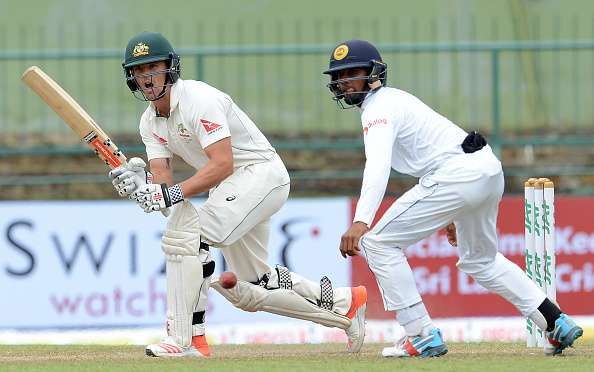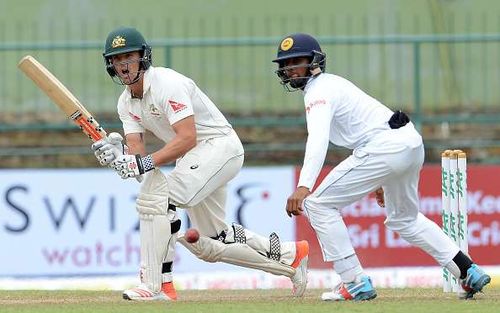
In defence of defence - The strategy of survival in Cricket and elsewhere

It’s the age of pyrotechnics and confetti blasts, the era of jaw-dropping hitting and sinister scampering, acrobatics and associated antics, muscles and mohawks, tattoos and tattering the leather- times where decimation by willow wielders has decimated the meaning of the art of batsmanship and those where victory has a unidimensional definition.
The boredom that has come to mean test cricket in the popular cricketing folklore of today, manages to script some extraordinary tales ever so innocuously, despite all that is made of its dour take on life and evolution. Last week in Pallekele, it offered us a rare sight amidst the rigour of Lankan spinners weaving webs around the batsmen and close-in fielders stalking the pitch and threatening to grope them.
Australia lost the test match and by a significant margin. But no such summary would justify the manner in which they were defeated. Having lost their top order to the old sub-continental tactic of spin, two from their lower order – O’Keefe and Nevill set about doing the most unglamorous job in the game.
They blocked and blocked everything that was dished out to them. It was classical deadpan defence.
Also Read: 5 slowest partnerships in Test history
Such acts and demonstrations of great grit rarely catch the media’s eye these days. Even the commentators had no significant praise reserved for the batsmen for what they had done and for how long they had gone about doing it.
Of course, there wasn’t a chance on earth for Australia to win that game and a very hypothetical one of saving it, but surely one would have to admit that both Nevill and O’Keefe (who was carrying an injured hamstring) played their most memorable test innings thus far in their young test careers.
There was nothing exhilarating about what they did, it was pure resilience and stout defence, hoping to see the day through and perhaps praying for the game to be saved, but how they managed to keep the Sri Lankans on the field for a good couple of hours must have given them immense confidence in their batting abilities and temperament.
Backtrack our memory to South Africa facing India in Delhi and we remember how two modern greats of cricket stapled their wings out of use and decided to take the hard road. Amla and De Villiers - men whose shot-making is generally ethereal and whose run-scoring is a mix of penance and panache - kept out an unbelievable number of deliveries from an Indian attack that was buoyed by the way the series had shaped up.
The duo showed a completely different side of their characters as batsmen, meeting ball after ball and over after over with unwavering concentration and discipline. To know how tough it would be for natural stroke-makers to turn into compulsive blockers, let’s try imagining a Formula 1 driver dealing with a mental two digit speed limit or a great striker in football playing for time. It is almost deigning!

One might argue that such innings make for poor entertainment and make an already slow game dead, but a dimension of the game that would be on display then, would offer a curiously new perspective of cricket in the modern day and age.
It is abrasive, vitriolic and consuming, for it tests the limits of human resistance to the vagaries of time and takes a combination of physical and mental efforts for it to culminate into and converge with glory.
This is not easy and by no means a common phenomenon. Hence any attempt along these lines or one that makes appreciable headway in that direction ought to be honestly appreciated.
The way the Australian dressing room celebrated after they managed to save a test match in the Ashes of 2005 is a testimony to the value of the ability to put up stiff resistance to defeat despite having no hope of victory.
There is a romantic redundancy in such times. The bowler is bringing out the most vicious of his deliveries and the batsmen play like it’s their life that they are fighting for. The fielders howl and hoot for every half a chance that comes wooing, all this while the clock ticks, second by second, eating into the chances of one’s victory and haranguing with defeat to rescue the other.
This process repeats to make another delivery, and another.
Nothing can better the joy of winning and perhaps the only that comes close to it is staying undefeated despite not being victorious, but then even in loss and defeat - all that goes into keeping them away for as long as possible is a spectacular rendition – be it in life or in cricket.